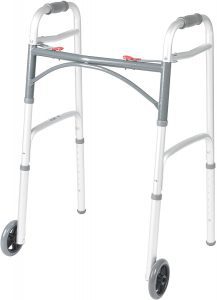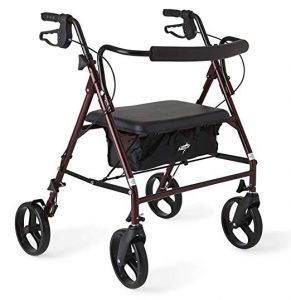The Best Walker
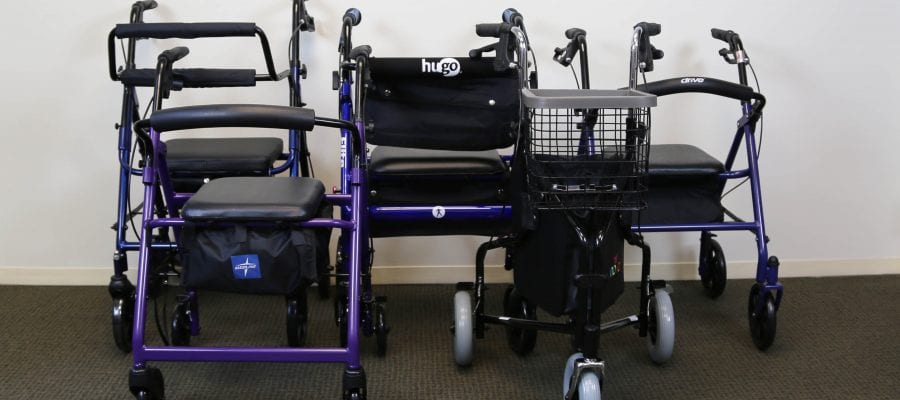
Our Review Process
Don't Waste Your Money is focused on helping you make the best purchasing decision. Our team of experts spends hundreds of hours analyzing, testing, and researching products so you don't have to. Learn more.
Our Picks For The Top Walkers
- 1. Stander Compact Organizer Walker
- 2. Able Life Foldable Walker
- 3. Drive Medical Adjustable Rolling Walker
- 4. Hugo Elite Spacious Storage Wheeled Walker
- 5. NOVA Medical Products Traveler Braking Walker
- 6. Medline Lightweight Easy Store Walker
- 7. Drive Medical Casters Ergonomic Walker
- 8. Drive Medical Deluxe Aluminum Independent Walker
- 9. Drive Medical Nitro Portable Foldable Walker
- 10. Drive Medical Side Style Easy Store Walker
- 11. Medline Customizable Steel Walker
- 12. Hugo Mobility Tool-Free Assembly Walker
- 13. Carex 2-Button Gliding Walker
If space is an issue, you'll want to go with this walker, which is both lightweight and foldable. The 6-inch front wheels make it a breeze to push, while the locks allow users to secure the walker safely in one spot. There's even a built-in organizer pouch for holding your wallet, cell phone or favorite book.
Multiple Color OptionsYou'll find this walker comes in a choice of three colors, including regal rose, cobalt blue and black walnut.
Since this walker weighs just 7 pounds, it's easy to transport in a car when you need to run errands. It also collapses to just 7 inches, so even if your car is compact, it will fit. The walker requires no assembly and is designed for individuals ranging from 5 foot 6 inches to 6 foot 3inches in height.
High Weight CapacityThis walker has a large weight capacity of up to 400 pounds.
This walker is built with lightweight steel, giving it a more reliable frame than one that is made of aluminum. It has a weight capacity of up to 300 pounds and wheels that are large enough to provide balance without getting in the way while you're packing it in your trunk or car. A built-in back rest means you can have a seat when you need to, and...
Lightweight But SturdyThis walker provides sturdiness without adding weight, making it great for taking on the go with you.
You won't have to worry about your hands getting sore with this walker, which comes with ergonomic hand grips. It also has hand brakes you can adjust to your own strength level. A snap makes sure the walker remains in a folded position while collapsed to avoid it opening up while you're moving it around to store it.
Great Hand GripsThe hand grips on this walker are ergonomically designed for comfort while you're using it.
Buying Guide
You probably never thought about what you’d want in a walker until you needed one. But once you start shopping around, you’ll quickly see that there are plenty of things to consider. You’ll want a walker that’s stable, even when you’re rolling across rough terrain like a gravel driveway. But you also need a walker that’s comfortable to use.

With walkers, comfort is often in the handlebars. Some come with ergonomic grips that put you in control as you maneuver around. Some feature seats that make it easy to rest if necessary. As you look at various features, you probably know which ones you’ll most likely use so that you can narrow walkers down to the most comfortable.

One important feature in a walker is storage. Being able to stow items in the walker can come in handy, even if you’re just carrying an item from the kitchen to the bedroom. Many modern walkers include storage pouches that tuck away neatly beneath the seat. They’re just large enough for holding a wallet, smartphone, book and bottle of water or whatever combination of small items you might need.
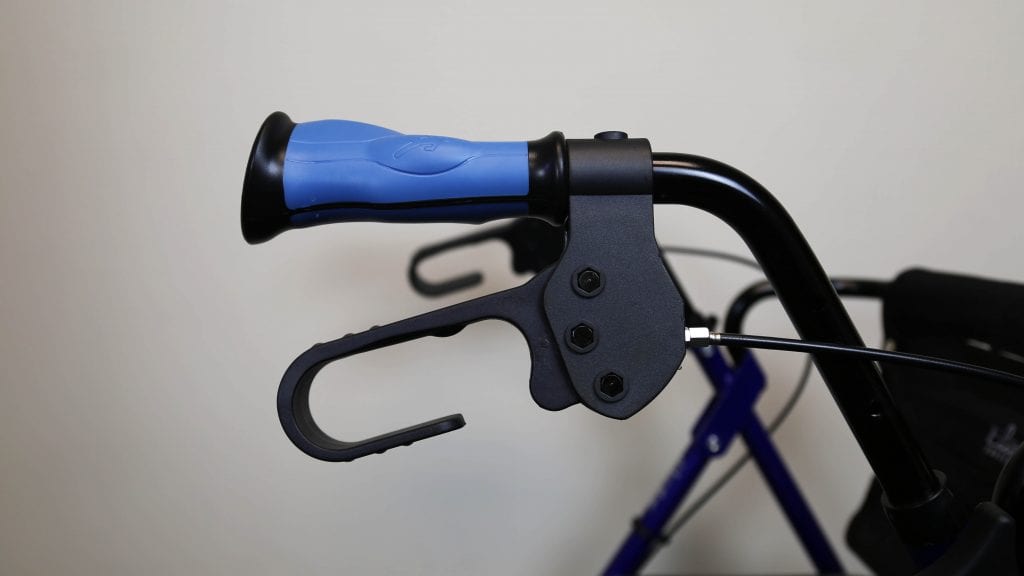
Of course, some people prefer a more traditional walker, featuring nothing more than bars, comfortable grips and a couple of wheels. You can usually find a traditional walker for a much lower price than the versions with seats and storage, but there are walkers with those features that are priced in between the extremes. Another option is to purchase an affordable basic walker and buy a separate basket or pouch for it.

Lastly, it’s important to pay close attention to wheels. Some walkers have two wheels, while others have four. Four wheels will give you more control, especially if the wheels are larger. However, if you only plan to use the walker indoors, two wheels will probably suffice. Some walkers have no wheels at all, but if that’s an important feature, you can add them.
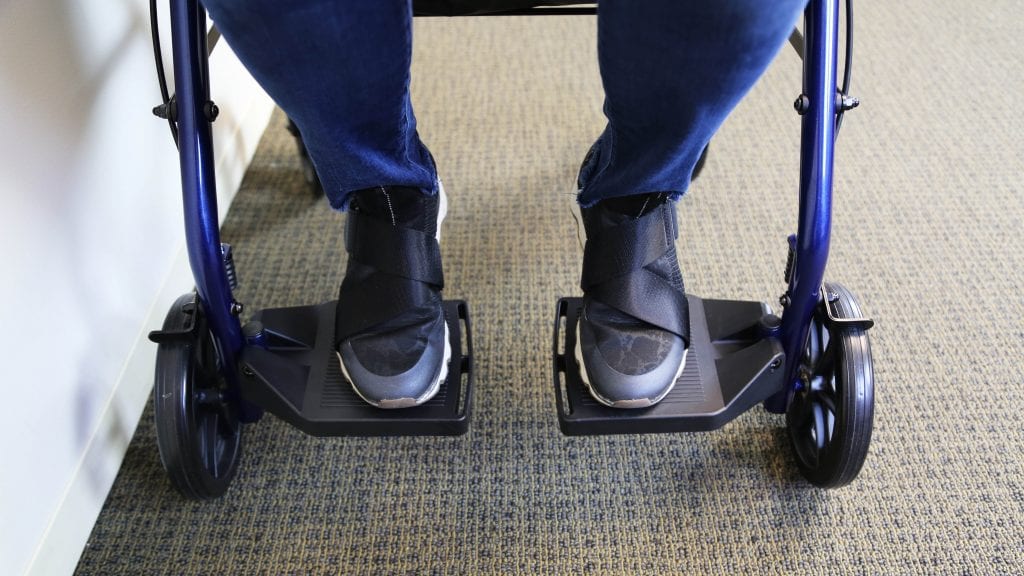
What to Look For
- The first thing you’ll need to decide as you start walker shopping is how much you want to spend. You can get a basic folding model with two wheels, or upgrade to a walker with storage and a seat for a bit more.
- If you’re willing to spend even more, you can upgrade to a walker that has more advanced features. You can find rolling walkers that are fairly affordable while still offering plenty of amenities.
- Before you buy, consider the conveniences your walker of choice will offer. Some walkers have a seat with a backrest that lets you use it while seated.
- Another feature that can come in handy is an under-seat storage bag that can hold a few items for you.
- Wheels are also upgraded on many more expensive walkers. Instead of the two small wheels that you’ll get with basic walkers, you’ll get four wheels that provide advanced maneuverability. Consider both support and portability when looking at the wheels on a walker. If you plan to take the walker out of the house, where you might encounter unpredictable terrain, more wheels will increase your control.
- Some walkers don’t come with wheels at all. In some cases, you can buy a kit separately for a minimal upcharge, but you’ll need to install them.
- Although more expensive walkers may have more features, those extras can also weigh them down. Basic walkers are much more lightweight, which will make them easier for folding and tossing into the back of a vehicle when you leave the house.
- Most of your contact with the walker will be with the handgrips. Look for one with ergonomic handle grips that are situated at natural angles for more comfort. You can also adjust the handlebars to make sure they’re at the ideal height.
- Rolling walkers need brakes so that you can stop them stop. Look for ergonomic hand grips that will keep you comfortable while you’re using it.
- Some walkers have locking brakes. This can help keep you safe if you’re prone to falls
- In addition to weight, the mechanism itself can make it easy to open and close the walker. Some walkers have a push-button mechanism that make them easy to close.
- Width is also important in a walker. Measure the doorways of your home before you buy to make sure you can easily squeeze the walker through each door.
- If you plan to regularly remove your storage pouch to carry around with you, it’s important to note that some are easier to remove and reattach than others.
- Unless you’re purchasing the walker preassembled, consider the extra time and effort necessary to put it together. Some walkers arrive fully assembled, which can be a bonus if you don’t have a helper to put it together when it arrives. Still others are fairly easy to assemble and require no tools.
More to Explore
Walkers are only one type of mobility aid used in the U.S., which help with both temporary and permanent mobility issues. Canes are the most popular, with an estimated one in 10 people over the age of 65 using one. Crutches tend to be more popular for temporary mobility issues, including post-surgical recovery. An estimated 4.6 percent of U.S. adults rely on a walker, which helps not only with mobility but balance. Wheelchairs are popular for traveling a long distance in a short time, but they can be more difficult to maneuver than a walker. Lastly, there are scooters, which can even be taken on some roads.









